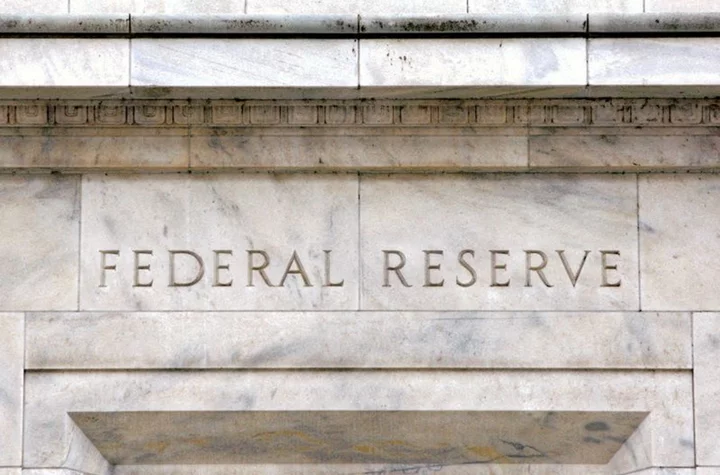By Howard Schneider and Indradip Ghosh
WASHINGTON Blame it on economic theory not matching reality, groupthink among forecasters or political partisanship by opponents of the Biden administration, but a year ago much of the U.S. was convinced the country was in a recession or would be soon.
The first two quarters of 2022 had seen U.S. economic output contract at a 1.6% annual rate from January through March and at a 0.6% annual rate from April through June, and by one common, though not technically accurate, definition the country had already entered a downturn.
Why wouldn't it? The Federal Reserve was quickly cranking interest rates higher, housing investment seemed to be buckling, and the conventional wisdom was that other industries, consumer spending, and the job market would all tumble as well.
"A number of forces have coincided to slow economic momentum more rapidly than we previously expected," Michael Gapen, chief U.S. economist at Bank of America, said in a July 2022 analysis. "We now forecast a mild recession in the U.S. economy this year ... In addition to fading of prior fiscal support ... inflation shocks have eaten into real spending power of households more forcefully than we forecasted previously and financial conditions have tightened noticeably as the Fed shifted its tone toward more rapid increases in its policy rate."
Fast forward a year, and the unemployment rate at 3.5% in July is actually lower than the point where many analysts expected it to begin rising, consumers continue to spend, and many professional economic forecasts have followed Gapen in a course correction.
Reuters polls of economists over the past year showed the risk of a recession one year out rising from 25% in April 2022, the month after the first rate hike of the Fed's current tightening cycle, to 65% in October. The most recent read: 55%.
"Incoming data has made us reassess our prior view" of a coming recession that had already been pushed into 2024, Gapen wrote earlier this month. "We revise our outlook in favor of a 'soft landing' where growth falls below trend in 2024, but remains positive throughout."
The recession revisionists include the Fed's own staff, who followed their models to steadily downgrade the outlook for the U.S., moving from increased concerns about "downside risk" as of last fall, to citing recession as a "plausible" outcome as of last December, and then projecting as of the Fed's March 2023 meeting that recession would begin this year.
With the failure of California-based Silicon Valley Bank expected to put an extra constraint on bank credit, "the staff's projection ... included a mild recession starting later this year, with a recovery over the subsequent two years," the minutes of the Fed's March 21-22 meeting showed.
In May and June, the Fed staff projections "continued to assume" the U.S. economy would be in recession by the end of the year.
The more dour outlook disappeared at the July 25-26 meeting, Fed Chair Jerome Powell confirmed recently, with perhaps more details about the staff outlook to come in the minutes from that meeting, which will be released at 2 p.m. EDT (1800 GMT) on Wednesday.
"The staff now has a noticeable slowdown in growth starting later this year in the forecast, but given the resilience of the economy recently, they are no longer forecasting a recession," Powell said at a press conference after the end of last month's policy meeting.
Fed policymakers' projections, which are issued on a quarterly basis, never showed GDP contracting on an annual basis.
'CHUGGING ALONG'
What made the difference between an in-the-moment recession that many thought was underway last year to growth that has surprised to the upside?
The forecast miss wasn't even really close: By the third quarter of last year, growth had rebounded to a rapid 3.2% annual rate, and has remained at 2% or above since then, higher than the 1.8% the Fed considers as the economy's underlying potential. An Atlanta Fed GDP "nowcast" puts output growth for the current July-September period at 5.0%, showing continued strong momentum.
A big part of the story is the staying power of U.S. consumers, who have continued "chugging along" and spending more than expected, as Omair Sharif, president of Inflation Insights, puts it.
Spending has shifted from the goods-gorging purchases seen at the start of the coronavirus pandemic to the hot services economy that exploded this summer in billion-dollar movie runs and music concerts.
But the dollar amounts keep growing regardless of what's in the basket, leaving economists to steadily push back the date when the "excess savings" of the pandemic era will run dry, or puzzle over whether low unemployment, ongoing strong hiring and labor "hoarding" by companies, along with rising earnings, have trumped any anxiety over the outlook.
But it isn't just that.
It may be that high interest rates don't work the same way in an economy that spends more on less rate-sensitive services, and where businesses have continued to borrow and invest more than many economists anticipated - perhaps to capitalize on regulatory shifts aimed at encouraging technology and green energy projects.
A surge in local government spending also gave an unexpected boost to growth as localities put pandemic-era funds to work on a delayed basis.
Can it last?
One risk is if inflation resurges alongside a tighter-than-expected economy, and Fed policy needs to become even stricter and induce the inflation-killing downturn which officials still hope to avoid.
But the odds of that may be falling.
"We've been wavering for a while on whether to shift to the 'soft-landing' camp, but no longer," noted Sal Guatieri, a senior economist at BMO Capital Markets, in reference to the Fed's hopes of lowering inflation without provoking a recession.
"Broad strength" in the U.S. economy, he said, "convinced us that the U.S. economy is more durable than expected ... Not only is it not slowing further, it might be picking up."
(Reporting by Howard Schneider; Editing by Paul Simao)

